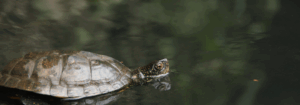New project: European Pond Turtle Study
BioMediterránea and Menorca Preservation commit to non-invasive monitoring of the European pond turtle to better understand population dynamics at eight strategic sites in Menorca

We announce our support for the project Study of the European Pond Turtle using Non-Invasive Methods through Drones, led by the organisation BioMediterránea. This pioneering initiative aims to gain a deeper understanding of the population dynamics of the European pond turtle (Emys orbicularis) in order to improve its protection and conservation, by using drone technology for monitoring and study.
Thanks to this support, the BioMediterránea team will be able to assess the effectiveness of a monitoring system that is less invasive than traditional methods, avoiding the capture and direct handling of individuals. Through the analysis of aerial images, key information will be obtained about their distribution, habitat and the threats they face, such as the loss of wetlands, the presence of invasive species and human pressure.
The study will take place between September 2025 and June 2026 in several strategic points across eight wetlands on the island, such as Son Bou, Son Parc, Macarella and Tirant. The results are expected to help design more effective conservation measures. In addition, the project will include outreach actions to engage the local population and raise awareness of the importance of conserving this species.
The European pond turtle (Emys orbicularis) is a species listed as “Under Special Protection” in the Balearic Islands under Decree 75/2005 and was recently classified as “Vulnerable” in Spain according to the Spanish Catalogue of Threatened Species.
The European pond turtle (Emys orbicularis), a small freshwater turtle, is listed as “Under Special Protection” in the Balearic Islands under Decree 75/2005 and has recently been classified as “Vulnerable” in Spain according to the Spanish Catalogue of Threatened Species. It is also protected under European legislation, being included in the Habitats Directive and the Bern Convention. Although its population in the Menorca Biosphere Reserve is considered to be in good condition, it still faces threats such as habitat loss, the presence of invasive species, overexploitation of freshwater and human pressure. Furthermore, it is a bioindicator species: its presence reveals the good health of wetlands. Since it requires a well-conserved habitat to survive, ensuring its protection benefits many other species.
“Aquatic fauna and turtles are two of the most threatened groups worldwide. New technologies, in combination with traditional monitoring methods, promise an exciting opportunity to improve our knowledge of such sensitive species,” says Genís Rovira, president of the BioMediterránea association.
“This project combines science, innovation and conservation, and fits perfectly with our mission to protect Menorca’s natural heritage. We are excited to support a methodology that may not only be more respectful of wildlife but could also prove more efficient and cost-effective in the long term. Moreover, studying and gaining a better understanding of bioindicator species such as this one is part of our objectives at MeP, since they help us to better understand and preserve the health of the island’s ecosystems,” explains Rebecca Morris, Executive Director of Menorca Preservation.
About BioMediterránea
BioMediterránea is an organisation dedicated to the conservation, study and awareness-raising of biodiversity in the Mediterranean region. Our mission is to protect species, habitats and processes within Mediterranean ecosystems, carrying out actions to improve their status while increasing public awareness of their importance and their role in ecological balance.